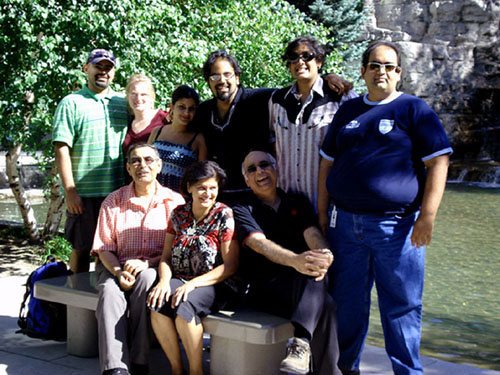 |
| ArcelorMittal boss Lakshmi Mittal |
Today, I am presenting a 1999 article from Forbes Magazine that shows how Mittal's business savvy turned around the state owned Iron and Steel Company (ISCOTT) and eventually bought the company for US$70 million. Mittal was able to do what the TT government could not.
STEEL, ONCE A FONT of wealth and a symbol of America’s industrial might, is in sorry shape now. Government-subsidized mills across the globe are dumping metal on a glutted market. In the past 11 months, five U.S. steelmakers and one Mexican firm have filed for bankruptcy.
In this environment, who would want to buy a steel mill? Lakshmi Mittal would. This 49-year-old son of a steelman from Rajasthan, India buys troubled mills all over the world and tucks them into his Ispat International N.V. Ispat (“steel” in Hindi) netted $237 million on sales of $3.5 billion last year. Boasts Mittal: “We are the fastest-growing steel company in the world.”
While steel slab prices were falling from $260 in 1998, to $135 a ton in the first quarter of 1999, Ispat just kept shaving costs. It was one of only two companies worldwide (the other was Korea’s Posco) to turn a profit making slabs in the fourth quarter last year, when steel prices hit their low point.
Ispat’s global presence gives it one big advantage over the competition. Mittal owns mills in seven countries, and can play one country off another. Example: He bought the steelmaking operations of Inland Steel last year for $1.4 billion. The three Indiana plants employ 7,000 union steelworkers. In early July, they were threatening to strike. Ispat dropped some hints about doing without their production, since it could bring in steel from its Mexico plant. On July 24, the workers signed a tentative contract.
Within 12 weeks of closing on the Inland plants, Ispat cut annual costs there by $40 million ( $8 per ton of output) by leaning on suppliers. “Every month we compare the prices, we compare the costs per ton [among the plants across the world],” explains Ispat president Johannes Sittard, sitting in the spartan corporate offices of Ispat Inland in downtown Chicago. “With this permanent exchange [of information] you get some nice cost savings.” All told, Mittal has reduced Inland’s operating costs by $45 a ton.
Mittal began working in his father’s mill as a teenager. In 1975, at age 25, he left for Indonesia, where he started a scrap-melting steel plant with a local partner.
Several years later Mittal began looking for a substitute for the expensive scrap he was importing to Indonesia. He read about something called direct-reduced iron, a technique for smelting without melting–removing the oxygen from iron ore while it’s still solid, that is. Mittal figured he could cut his raw-material costs in half by buying direct-reduced iron rather than scrap. In 1983 he started importing the stuff from a state-owned steel mill in Trinidad & Tobago.
That led to his next big move. As state-owned mills are wont to be, the operation in Trinidad was ineptly managed, losing $80 million a year. The soft-spoken Mittal describes this boondoggle politely: “They weren’t paying attention to improving the technology, and they were really not bothered because it was a state-owned company.”
In 1989 Mittal negotiated to lease and run the mill under a 10-year contract, with an option to buy in 5 years. Within 12 months he’d put the mill in the black. In late 1994 he exercised his option, buying the mill for $70 million in cash and a pledge to invest another $74 million over 3 years. The purchase made Ispat one of the world’s largest producers of direct-reduced iron, at 7 million tons a year.
Mittal’s experience in Trinidad set a pattern. Between 1990 and 1996 he acquired and turned around formerly government-owned mills in Mexico, Canada, Ireland and Germany.
Two years ago Mittal raised $776 million of equity capital by selling 20% of his company to the public and listing it on the New York and Rotterdam exchanges. Since then, a collapse in steel prices has sent the stock down by more than a half to $11, making Mittal’s 79% stake worth just $1.2 billion. J.P. Morgan analyst Michael Gambardella predicts earnings of $118 million or $1 a share this year, down from $2.10 a share last year. But earnings should recover. The price for hot-rolled steel in the U.S. recently perked up to $300 from a low of $250 per metric ton.
Mittal pays a tiny dividend, so you can safely assume he will pile up some cash and then buy something. “World steel production is more than 700 million tons and we are only 2%,” he declares. “Two percent is nothing, and I’m just 49. There’s still plenty of time.”
FROM FORBES MAGAZINE




No comments:
Post a Comment